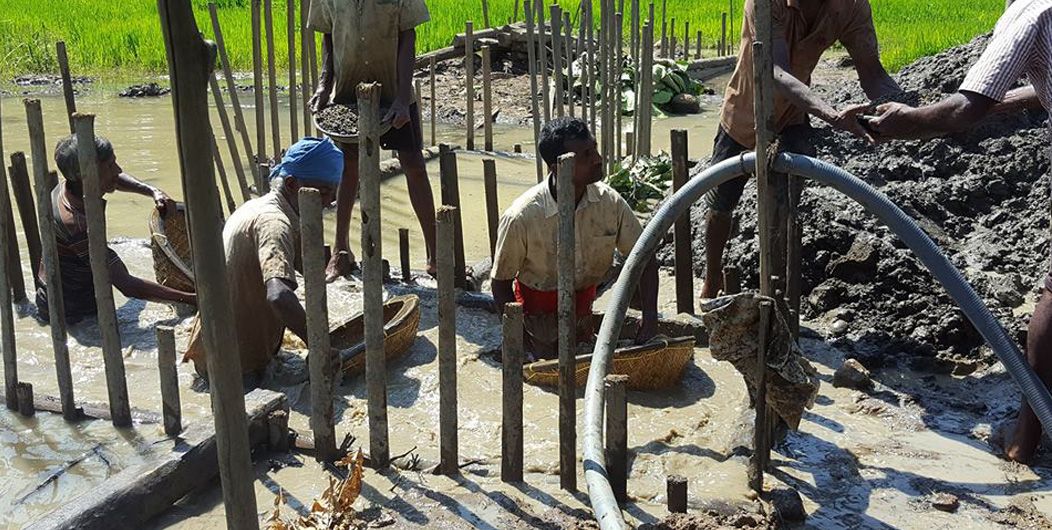
Sri Lanka’s love story with precious gemstones spans back to nearly 2000 years and the country still continues to be one of the top 5 gem producing countries in the world. Sri Lanka has always been a popular sourcing destination for sapphires, beryls, and rubies and Sri Lanka is famous for sapphires of all colours. Large, fine examples are found across museums and royal jewellery collections.
Traders, from the ancient Romans, Arabian sailors, European colonial powers, to the new rising wealthy class in China, have always coveted the Ceylon Sapphire, the geographical indication for the sapphires mined in Sri Lanka. Moreover, the country is also celebrated for the chrysoberyl and moonstones, which have characteristics unique to Sri Lanka.
In addition to the precious gemstones that are found in Sri Lanka, the country also has a long history in cutting and polishing gemstones and crafting jewellery using precious metals, gems, and ivory, which have bolstered our reputation as a trading hub of luxury goods since the 14th Century AD.
In addition to our long history in gemstone mining, Sri Lanka has a strong reputation as a single source for precious and semi-precious gemstones, due to the vast range of gemstones found in the country. Sri Lanka has nearly 75 varieties of gemstones out of the 200 minerals, that are classified as precious and semi-precious gemstones, belonging to 10 main varieties including corundum, chrysoberyl, spinel, garnet, tourmaline, beryl, zircon, quartz, topaz, and feldspar.
Sri Lanka’s gem bearing gravel, known as illam, are some of the best in the world. Blessed with ideal conditions including the right blend of chemistry, heat, pressure, weather, and time for gem crystals to grow, and to be deposited and concentrated in gravels. Sri Lankan gem miners mainly tap the secondary deposits found in Sri Lanka and only 20% of the total deposits had been harvested at the moment. Mining is done by traditional methods by choice and has a minimal impact on the country’s environment. Mining license in Sri Lanka is regulated by the National Gem and Jewellery Authority (NGJA), who ensures a strict regime in minimising mechanised mining and rehabilitating mined land. Unlike in other gem rich countries, hardly an unfilled and abandoned gem pit could be found in Sri Lanka, thanks to the strict state control.
The availability of a great range of gemstones has allowed Sri Lankan gem lapidarist excel at gem cutting and polishing. The gem lapidaries in Sri Lanka combine traditional knowledge and skills with modern technologies to bring out the best lustre in a gemstone. Toda gem cutting and polishing in Sri Lanka include simple hand-powered cutting machines and modern high-end machinery. The ability of Sri Lankan gem cutters to orient a gemstone while retaining its maximum weight, especially high-end sapphires and other gemstones, has been long known in the global gem market and there is an increasing demand for recutting done at local lapidaries to meet specific customer requirements.
In addition, to ensure that each gemstone exported from Sri Lanka is of premium quality, the country does not allow the export uncut gems and gem testing and certification service of NJGA is available to buyers and exporters at a nominal fee.
Although not as celebrated as the gemstones from Sri Lanka, the country’s jewellery manufacturing and retail industry also blend strong tradition with the latest technology and innovation, differing heavily from its counterparts in Asia, America, and Europe. The face of jewellery manufacturing in Sri Lanka varies from small workshops where gold jewellery is crafted by hand to modern factories where jewellers work at modern benches with a greater variety of tools and techniques working with a variety of precious metals other than yellow gold, including other gold alloys, silver and platinum.
At small workshops in Sri Lanka, craftsmen model jewellery by hand; sawing, bending with pliers, soldering with handheld gas torches or even blowpipes, and hammering; while at modern workshops designs were created with CAD/CAM and wax carving, mould making, and casting. Despite their greater difference, both ends serve Sri Lanka’s retail jewellery market sustained by a culture where jewellery is an essential part of the lifestyle, weddings and other special occasions.
Sri Lankan jewellery manufacturers have excelled the skills of combining coloured gemstones with intricate carvings in traditional and modern designs to suit the changing requirements and preferences of the global and local markets.
Sri Lankan lapidaries have extended their age-old skills and capacity to diamond cutting and polishing and today a growing number of organisations exclusively caters to a global clientele by precision calibrating, cutting and polishing diamonds imported to Sri Lanka.
Having perfected the princess and Baguettes cuts, Sri Lankan diamond cutters provide a series of services to leading brands in jewellery and watchmaking industry, including sawing of rough diamonds, polishing of princess cut and polishing of precision-cut Baguettes and tapered Baguettes, by combining latest Israeli, Swiss and American technologies with local traditional skills.